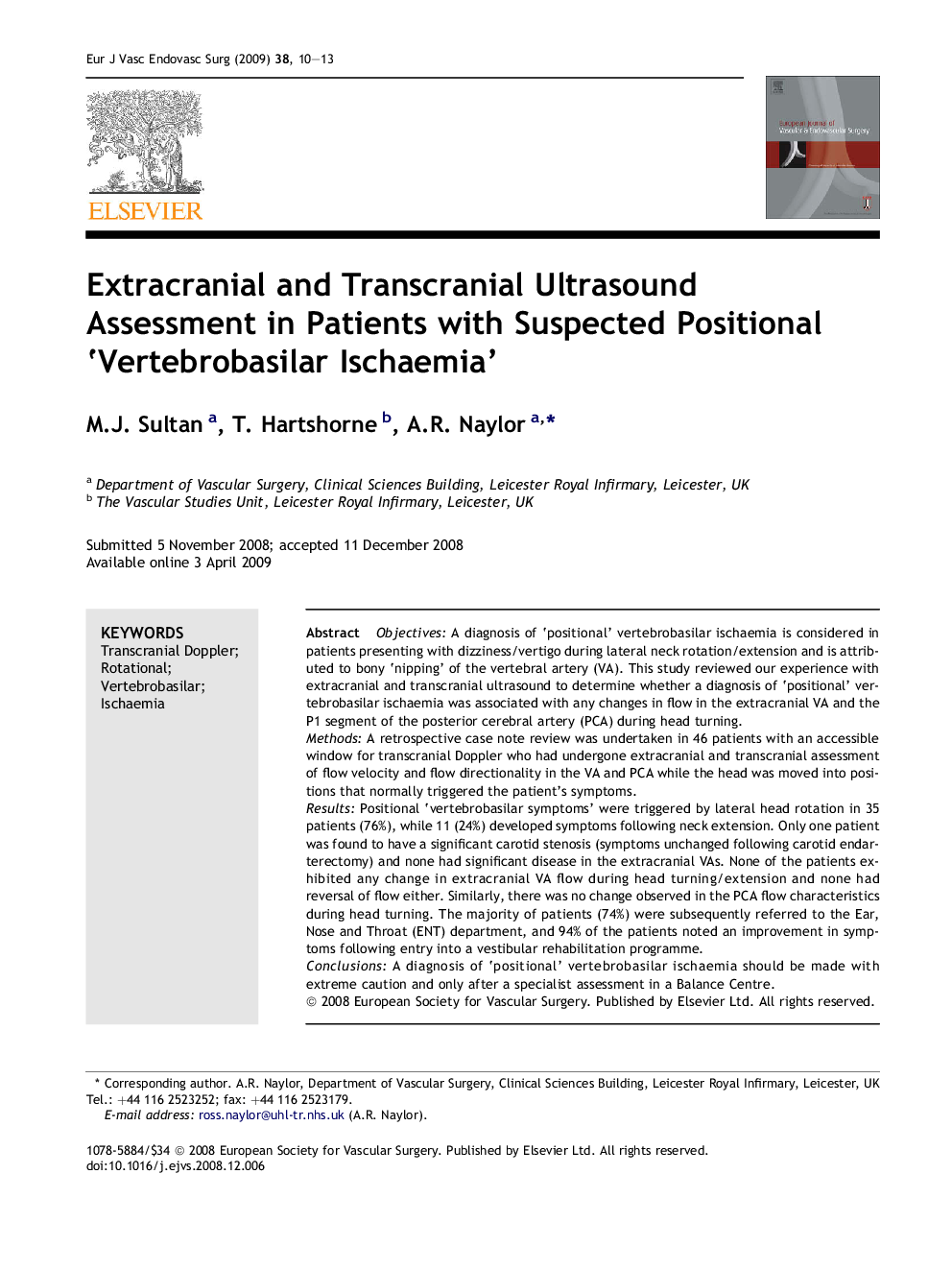| کد مقاله | کد نشریه | سال انتشار | مقاله انگلیسی | نسخه تمام متن |
|---|---|---|---|---|
| 2914454 | 1575516 | 2009 | 4 صفحه PDF | دانلود رایگان |

ObjectivesA diagnosis of ‘positional’ vertebrobasilar ischaemia is considered in patients presenting with dizziness/vertigo during lateral neck rotation/extension and is attributed to bony ‘nipping’ of the vertebral artery (VA). This study reviewed our experience with extracranial and transcranial ultrasound to determine whether a diagnosis of ‘positional’ vertebrobasilar ischaemia was associated with any changes in flow in the extracranial VA and the P1 segment of the posterior cerebral artery (PCA) during head turning.MethodsA retrospective case note review was undertaken in 46 patients with an accessible window for transcranial Doppler who had undergone extracranial and transcranial assessment of flow velocity and flow directionality in the VA and PCA while the head was moved into positions that normally triggered the patient's symptoms.ResultsPositional ‘vertebrobasilar symptoms’ were triggered by lateral head rotation in 35 patients (76%), while 11 (24%) developed symptoms following neck extension. Only one patient was found to have a significant carotid stenosis (symptoms unchanged following carotid endarterectomy) and none had significant disease in the extracranial VAs. None of the patients exhibited any change in extracranial VA flow during head turning/extension and none had reversal of flow either. Similarly, there was no change observed in the PCA flow characteristics during head turning. The majority of patients (74%) were subsequently referred to the Ear, Nose and Throat (ENT) department, and 94% of the patients noted an improvement in symptoms following entry into a vestibular rehabilitation programme.ConclusionsA diagnosis of ‘positional’ vertebrobasilar ischaemia should be made with extreme caution and only after a specialist assessment in a Balance Centre.
Journal: European Journal of Vascular and Endovascular Surgery - Volume 38, Issue 1, July 2009, Pages 10–13